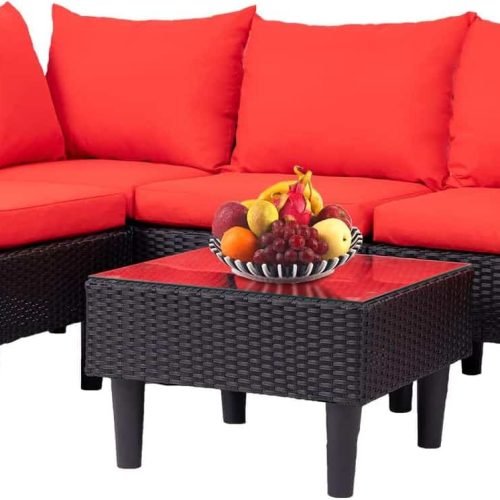How To Prepare A Garden Bed
Welcome to Garden Josiah, a top spot for gardening help! My names Joshua I’m a fourth generation gardener and still learning bevety day! Are you eager to turn your outdoor area into a lively, lush space? One key first step is learning to prep a garden bed. This info is a big deal, whether you’re a new or an old hand at gardening. (Playin in the dirt.😃) Growing healthy plants and getting a big harvest starts here.
Now, what’s it mean to get a garden bed ready? Is it just tidying up and planting seeds? There’s more to it than that. We’re going to take a deep dive on how to set up a garden bed. This includes looking at the soil, finding what’s already there, and adding the right stuff to make it great. Let’s uncover the secrets to a blooming garden bed together
Join me for a journey into crafting the perfect garden. From setting the ideal planting stage to making sure your plants thrive, I’ll share all the do’s and don’ts you need. Let’s get started and make your garden bed the best it can be!
Key Takeaways:
- Preparing a garden bed is crucial for healthy plant growth and successful gardening.
- It means checking the soil and what’s growing there already.
- Picking the right compost and nutrients is vital to make the soil better.
- Setting the bed up well and planting and watering correctly boosts plant success.
- With our guide, you’ll be all set to make a thriving garden bed.
Understanding Your Garden Bed’s Current State
To get your garden ready for great growth, know where it’s at now. Look at the soil, plants there, and what might get in the way.
Figuring Out Your Soil Conditions
The first thing is to check the soil. You’ll find out what kind it is, test if it’s too acidic or not, and see if it drains right.
Knowing the soil type tells you about its nutrients and how well plants can grow in it. Different soils have different needs. Soil pH testing is important to check the acid level. This matters for how well plants can use the food in the soil.
Good drainage is key to keeping plants healthy too. It stops the soil from getting too wet or dry. This way, the roots can breathe and grow well.
To ensure successful gardening, it is crucial to figure out your soil conditions before planting. This knowledge will help you determine which plants are best suited for your garden and guide you in the necessary steps for garden bed soil preparation.
- One of the initial aspects to consider is your garden bed layout. Assess if your beds receive adequate sunlight or shade throughout the day. This information will aid in selecting plants that thrive in specific light conditions and determine how to organize your garden for optimal growth.
- Another important factor to analyze is the quality of your soil. Testing the pH level, nutrient content, and texture of your soil will provide insights into its fertility and composition. This, in turn, will help you determine what amendments or fertilizers may be required to improve the soil nutrient balance for your desired plants.
- If your soil quality is subpar, one option to consider is raised bed gardening prep. Building raised beds allows you to have more control over the soil conditions by creating a separate environment for planting. It allows for better drainage, as well as the ability to amend and tailor the soil to suit the needs of specific plants.
- Understanding your soil conditions is vital for successful gardening. By addressing issues such as poor drainage, low fertility, or imbalanced pH levels, you can optimize the growing conditions for your plants. Investing time and effort in garden bed soil preparation ensures that your garden thrives, resulting in healthier plants and bountiful harvests.
Identifying Existing Vegetation and Obstacles
It’s also important to spot what’s already there and what might block plant growth. Look for weeds, big rocks, roots, and trash.
Finding the weeds and clutter helps you see the struggles your plants might have. It gets you ready to clear them out. Your plants will do better without the bad stuff stealing their food and light.
Picking out and getting rid of the stuff that’s in the way makes a smooth, nice bed for your garden. This makes it easier for plants to grow strong and happy.
Garden Bed’s Current State Evaluation Table
| Evaluation Factor | Description |
|---|---|
| Garden Bed Soil Conditions | Identify soil type, test soil pH, evaluate soil drainage |
| Existing Vegetation | Identify weeds and unwanted plants |
| Obstacles | Identify rocks, roots, and debris |
Checking and understanding the garden bed sets you up for success. It guides your choices and actions for a great garden. Next, we’ll look at how to make the soil even better.
The Foundation of Growth: Soil Amendment Techniques
Creating a healthy foundation for plants is key for a great garden bed. This section will look at ways to improve your soil’s quality. It’s all about making sure your plants have the best environment to grow.
Choosing the Right Compost and Fertilizers
Choosing good compost and fertilizers is important for healthy soil. Compost adds good stuff to the soil and helps with water and nutrients. Make sure the compost is full of nutrients and safe to use.
Picking the right fertilizers helps your plants get what they need to grow well. Think about what your plants need and find fertilizers that have those things. Using natural fertilizers like fish emulsion or bone meal is a good idea.
Integrating Organic Matter into Your Soil
- Putting in organic matter is essential for rich soil. Things like compost, leaf mold, or manure make the soil better. They help with structure and bring more nutrients for plants.
- One easy way to add organic matter is by spreading it on top of the soil. Then, mix it in a little with a garden tool. You can do this every year to keep the soil in good shape.
- Make sure the organic matter you use fits with what you’re growing. Acid-loving plants like pine needles or coffee grounds. Vegetables do well in soil that’s full of compost.
Using these techniques will really improve your garden bed. The right compost, fertilizers, and organic matter will make your soil great for plants. This leads to healthy and productive plants.
Optimizing Bed Layout for Plant Health and Accessibility
To keep your plants healthy and your garden bed easy to work with, think about layout carefully. Just a few smart moves can help your plants grow better. And it makes gardening tasks a breeze. Planting certain vegetables next to other specific ones also aids in growing excellent veggies! I put together this plant cpmpanion chart to help you out:

Breaking Ground and Turning Soil
First, break the ground and turn the soil. It’s a big first step for a few reasons. This helps the soil become loose so roots can grow deep. It also gets rid of weeds and stuff that can steal plant food.
Use a garden fork or tiller to dig down 8-10 inches. This is deep enough for most plants. You’ll also want to take out anything that could get in their way. Then, smooth out the soil with a rake to get it ready for planting.
Layering for Nutrient-Rich Soil
- Adding layers to your soil is great for your plants. Mixing in compost and organic matter helps your plants get the food they need. It makes the soil better for them to grow in, too.
- Add 2-3 inches of compost on top of your soil. This adds important nutrients and tiny organisms that help plants grow strong. Spread it all over your garden bed.
- Don’t forget to mix in other organic stuff like old manure or leaf mold. These help with even more nutrients and keep the soil moist. Put these materials on top of the compost to create a great place for your plants to grow.
Optimizing Plant Health and Accessibility with Bed Layout
- Arrange your plants right to keep them healthy and easy to care forget . Good spacing and order make it simple to water and trim them. Think about how big they’ll get and how they like to grow.
- Give your plants enough space so they don’t crowd each other. This stops diseases and lets air flow well. Group plants that need similar water and sun. This makes care and watering simple.
- Put the taller plants in the back to make a nice view. They also give shade to shorter plants. This way, all your plants get the sunlight they need.
| Plant Name | Spacing | Height at Maturity | Sunlight Requirements |
|---|---|---|---|
| Tomato | 2-3 feet | 4-6 feet | Full Sun |
| Lettuce | 6-8 inches | 6-12 inches | Partial Shade |
| Zucchini | 2-3 feet | 2-3 feet | Full Sun |
Follow these steps to make your garden the best it can be. By turning the soil and mixing in good stuff, your plants will thrive. Adding the right plants in the right spots also helps everyone get the sun they need. This all makes caring for your garden simple and enjoyable.
Maximizing Success: Planting and Watering Best Practices
To make your garden bed thrive, use proper planting and watering ways. This helps your plants grow strong and healthy. We’ll look at some top tips for the best results.
When planting, think about space, depth, and what each plant needs. Good space means plants can grow without fighting for resources. Know how much space each plant needs for healthy growth.
Planting at the right depth is key too. Don’t go too shallow or too deep. Make a hole that’s two times wider than the roots. Place the plant at the right depth to keep the roots in solid contact with the soil.
Each plant type needs different care which is important to know. Some need cutting, feeding, or support. Do your homework on your plants to keep them happy in your garden bed.
Watering is as important as planting right. The right water keeps plants from getting too dry or too wet. Follow these watering tips for a great garden:
- Water your plants deeply but not too often. This helps their roots grow deep and be strong.
- Know your plants’ water needs. Some like it dry, some need more water. Find out what’s best for each plant.
- Water in the morning or late afternoon. This keeps the water from evaporating too quickly. Avoid the heat of the day.
- Using a drip hose or soaker hoses is smart. They water slowly right at the roots. This keeps your plants’ leaves dry, which helps them stay healthy.
By using these planting and watering tips, your garden bed will do great. Keep an eye on your plants and adjust as needed. With the right care, your garden will giving you a bountiful harvest!!

“ Josiah helping with garden location Spring 2024”
Conclusion
I’ve given you a complete guide on how to prepare your garden bed. You now have the knowledge and tools to make a great garden bed. First, check your garden bed’s condition, clear it of weeds and lumps.
Adding the right compost and fertilizers is important for your soil. Mix in organic matter. This will make sure your plants get the nutrients they need to grow well.
Think about how you place your plants when choosing your garden bed spots. Mixing and layering the soil is key. It helps your plants grow strong and healthy. Also, planting and watering right are important for your garden bed’s success.
Follow the advice from this article, and you’ll create a wonderful garden bed. Always keep an eye on your soil and plants’ needs. With good care, your garden will keep on giving back to you year after year.
FAQ
How do I prepare a garden bed?
To start, check the soil, plants, and stuff in your bed. Then, add good compost and fertilizers. Mix in organic stuff. Break the ground and make it ready for planting. Water right to help your garden grow well.
How do I figure out the soil conditions of my garden bed?
Know the soil by seeing its type, testing pH, and how it drains. This helps you know if it’s good for planting. You can fix it to make your plants happy.
What should I do if there are existing vegetation and obstacles in my garden bed?
To handle old plants or stuff in your bed, clear them out. You can pick them, dig them out, or use tools to clean up. This helps your new plants do their best without a fight.
How do I choose the right compost and fertilizers for my garden bed?
Think of what your plants need when you pick compost and fertilizers. Use rich compost and the right fertilizers for healthy soil. This gives your plants a good start.
How do I integrate organic matter into my garden bed’s soil?
Add organic stuff to make your soil better. Use compost or aged manure. Mix it in the top few inches well. This makes sure your soil is ready for new plants.
What should I consider when optimizing the layout of my garden bed?
Focus on plant health and where they’ll get sun and water. Clear the area well. Think about how much space they need. Use compost and mulch for good soil.
What are the best practices for planting and watering in a garden bed?
Space your plants well. Plant them not too deep. Take good care of them. Water deeply but not too often. This keeps them happy and growing strong.






